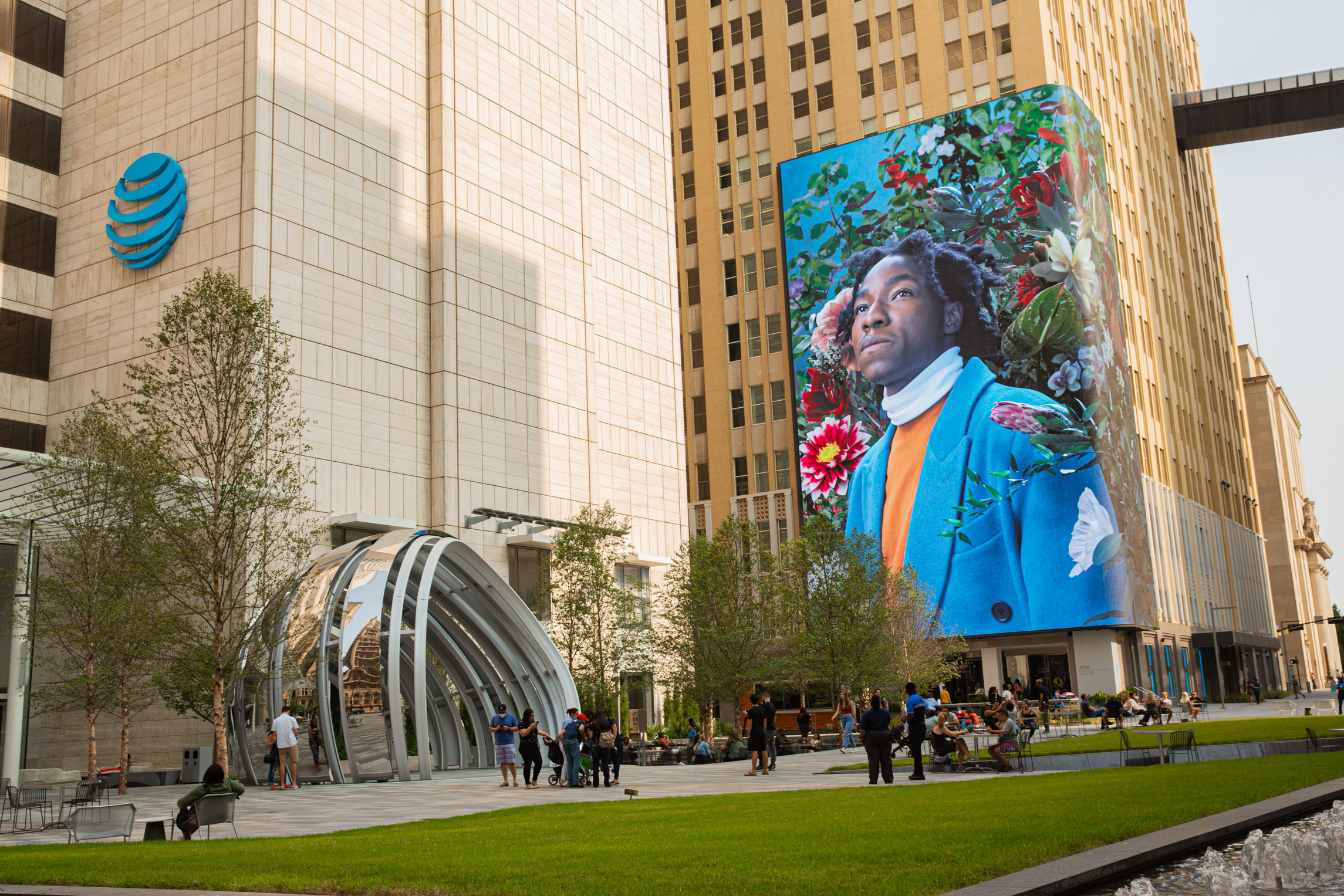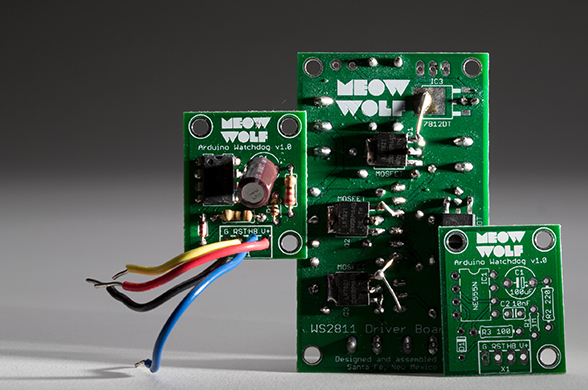Inspiration
Exploring future public spaces with CCA’s Digital Craft Lab
Oct18
Shared By Gian Pablo Villamil
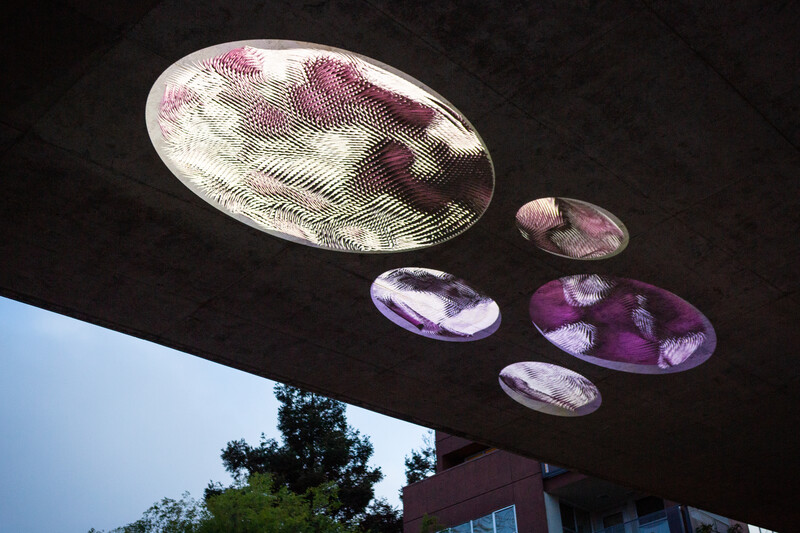
Written by Gian Pablo Villamil
At Britelite Immersive, we are very excited about the trend towards immersive, interactive artworks in public spaces. In recent years, projects like the Bay Lights and Day for Night (Salesforce tower) have become emblematic parts of the urban landscape in San Francisco and other places.
The practice of architecture and urban planning must expand to address works like this, and this starts in the education of budding architects. One of the most interesting things I am fortunate to be involved with is reviewing student work at CCA. For the past few years, I’ve been a guest critic of work from the architecture program that is pushing the boundaries of what is possible creatively and technically.
Most recently, I had the opportunity to see student work involving the creation of public spaces that are activated by video projection and interactivity, areas which resonate strongly with our work at Britelite.
Advanced Studio: Underworlds
The works presented were the result of a class organized as a collaboration between CCA’s Digital Craft Lab (http://digitalcraft.cca.edu/), led by Jason Kelly Johnson, and Robin Abad, Senior Planner from the San Francisco Planning Department. The goal was to design interventions that would activate and enliven underpasses all over the city, turning otherwise neutral and unused spaces into areas that will enhance their neighborhoods.
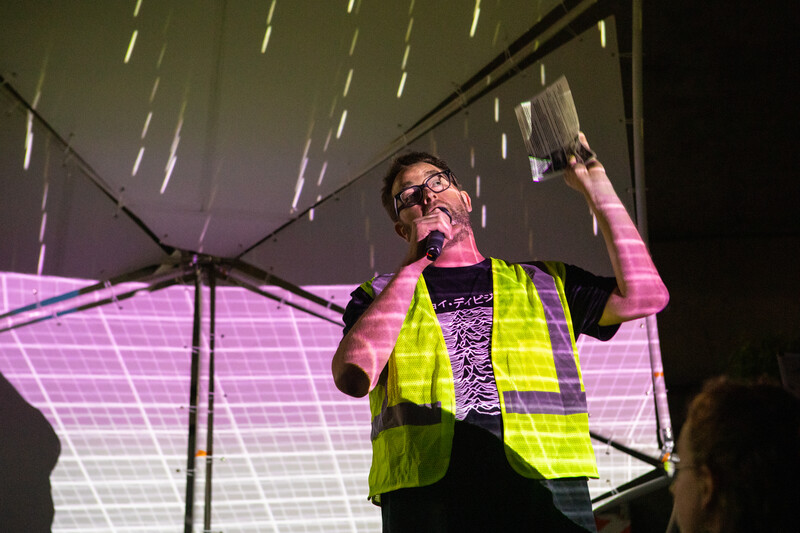
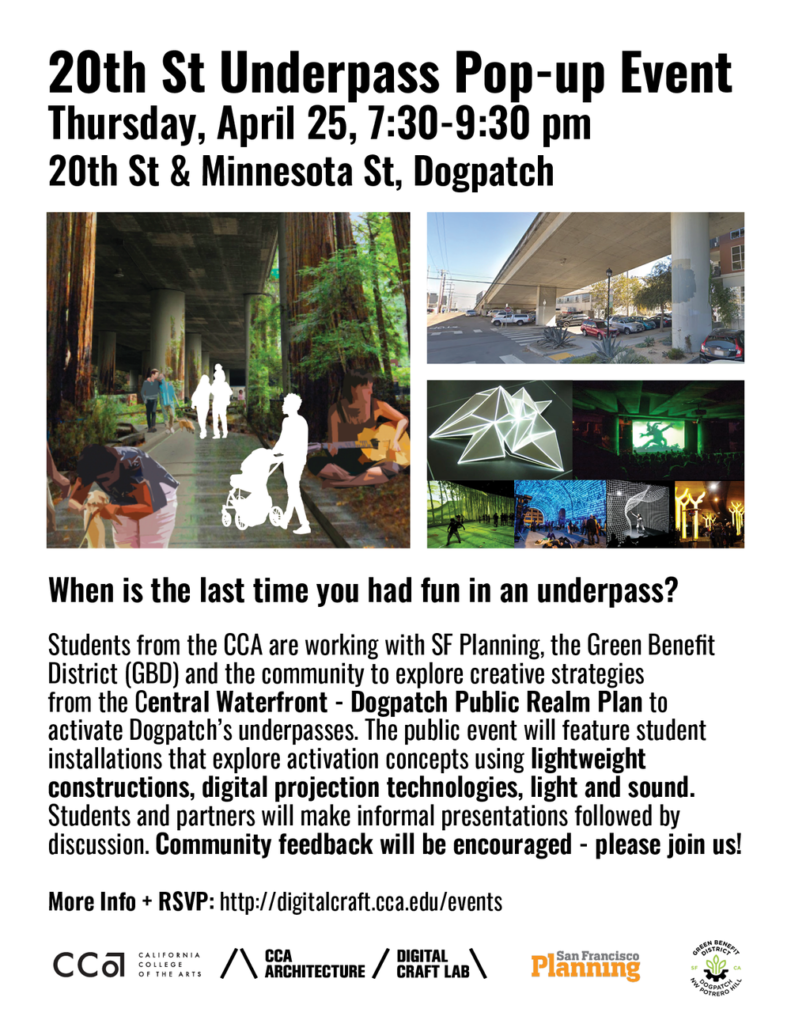
The culmination of the class was a public event on April 25th, where the works were installed at an underpass in the Dogpatch neighborhood, and feedback was solicited from members of the community:
http://digitalcraft.cca.edu/events/2019/4/25/425-20th-street-underpass-activation-pop-up-event
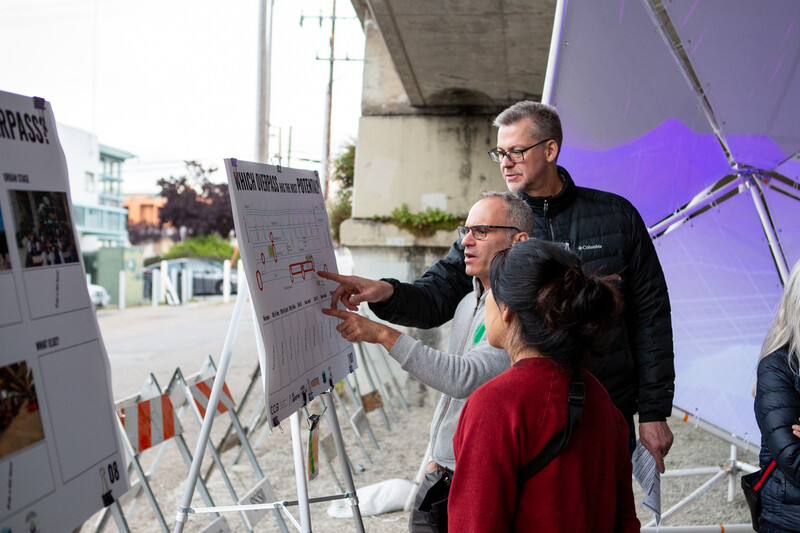
Works
Three student concepts were presented, and built using lightweight structures. In addition, Future Forms, a local art/architecture group, presented a piece as well.
01 - Retreat Space: This concept turned the space into a meditation and retreat space. Through audio, video projection and other media, visitors would be guided through a meditation journey. The project included projection domes showing a series of video loops, and custom built seating fixtures to encourage people to settle in and relax.
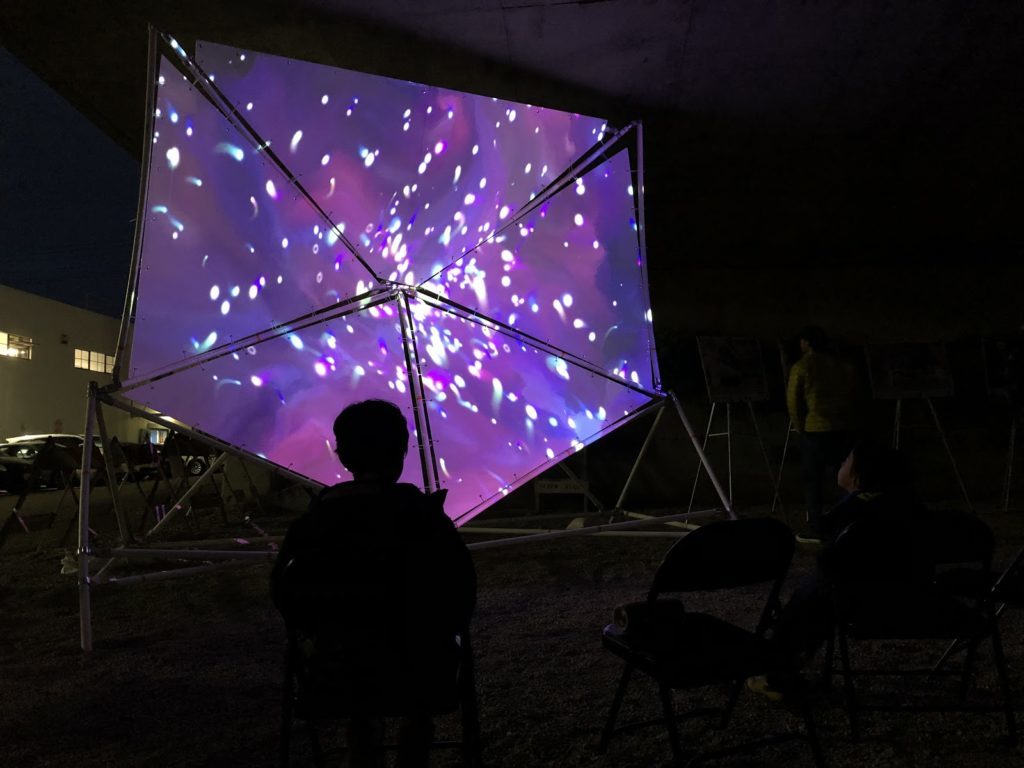
02 - Water Play: This work referenced the proximity of the waterfront, and raised awareness of the role of water in the neighborhood. It took the form of projection of simulated water flows on tall faceted structures. A camera feed allowed viewers to interact with the simulated water flow.
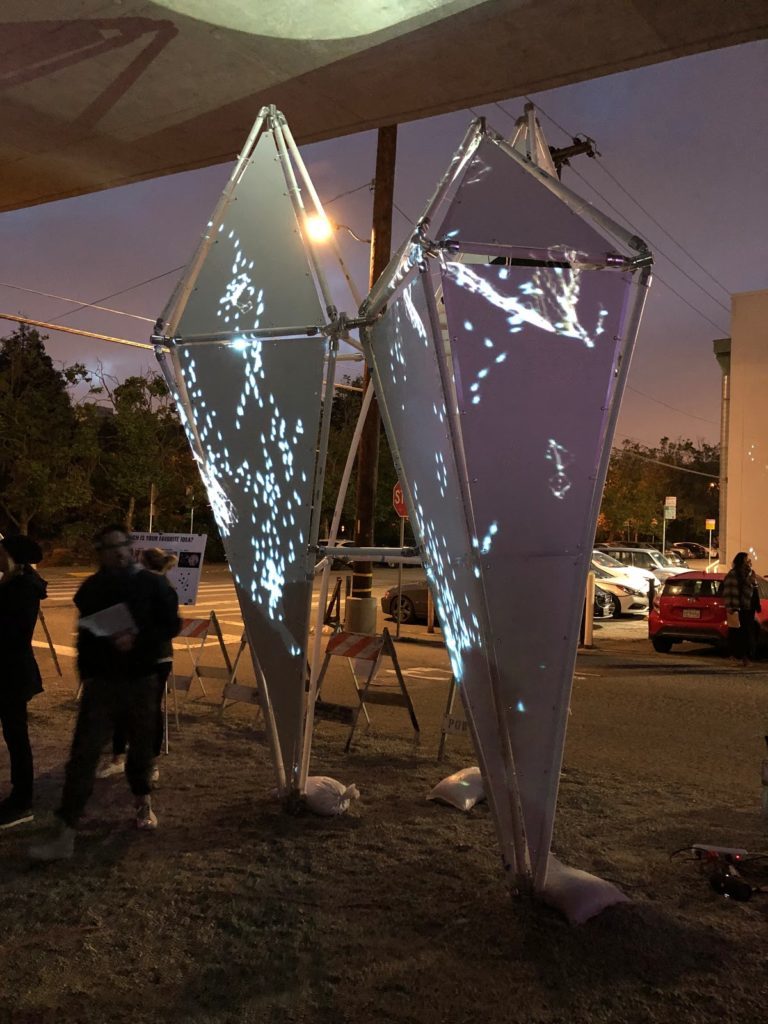
03 - Urban Living Room: This piece turned the space under the underpass into a shared public space, encouraging people to treat it as an extension of their living room. Projections onto multiple structures were influenced by television imagery, since the television is in some ways a central part of most living rooms!
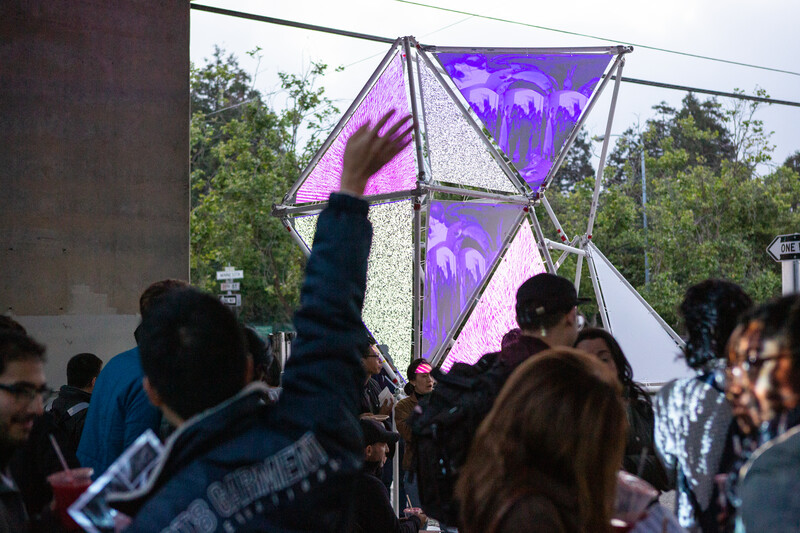
04 - Portals: This piece was not strictly a student work, but was produced by Future Forms. A series of projections on the underside of the bridge showed abstract shapes derived from sound and motion gathered from the surrounding area.

Techniques
While there was a great deal of variation in the projects and their conceptual basis, they shared a few common factors in their execution.
The first was a lightweight construction system using PVC pipes and lightweight boards, that allowed for the creation of large structures that can be easily set up and moved. This ability to prototype at scale is novel in architecture, and opened up many creative pathways.
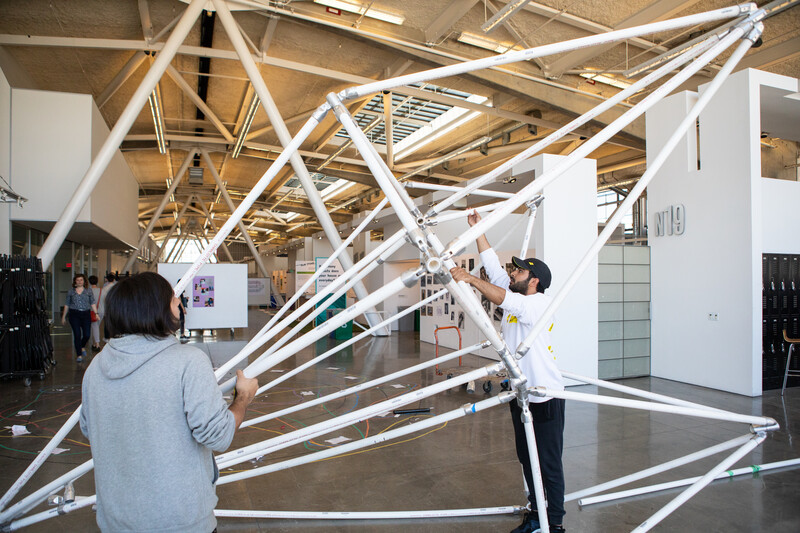
A second tool that was used by all teams was video projection mapping. This allows projecting video content (either recorded or interactive) directly onto the various faces of a complex object. For many of the students, this was the first time using this technique and a software tool called Touch Designer. Using projection mapping encourages students to start thinking of video and digital media as an integral part of architectural projects, by creating a direct link between the media and the structural form.

Finally, the focus on producing a public event created an interesting dynamic, in that work had to be completed and setup following a strict deadline. Moreover, there was a structured process in place to gather feedback about the works.
Principles and feedback
After the event, a review with an expert panel took place. Experts from various industries, including creative software, experience design, game design and architecture had a chance to see the pieces once again, and offer their thoughts and feedback.
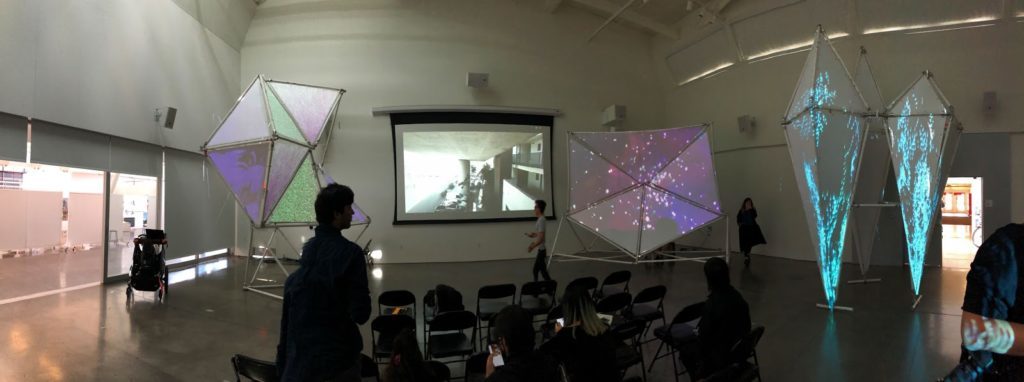
A key consideration (which the teams addressed) was the expected audience. As these become permanent artworks, it is important to consider the experience for people who live near them, people who pass by on their way to somewhere else, and other visitors.
A key challenge is to ensure that the piece remains fresh, that it evolve and change. One powerful technique for doing this is to add an element of Interactivity, responding to people as they interact with it. One of the pieces shown, Water Play, had a simple yet highly engaging interactive feature.
Another way to keep a work like this ever-changing is by using generative content, that is generated programmatically and changes over time. For example, the Bay Lights uses a system that ensures that any given state of the lights is unique, and it rarely (never) repeats.
For pieces that will have a long lifetime, and where people will engage directly for some time, it is important to consider the various transitions between states. For example, instead of just cross-fading between different video loops, consider transitions which are more theatrical and experiential. On a related note, it can be very powerful to reserve the full scope of the projection surface for key moments. An installation could limit projection to a cropped area, and then “break out” of the bounds as a key dramatic transition.
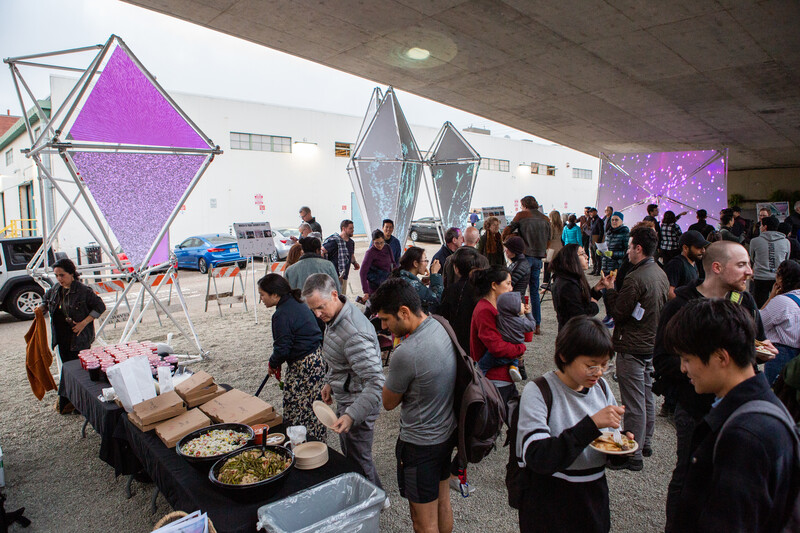
Conclusions
As digital media becomes more and more a part of modern cityscapes, it is exciting that future architects and urban planners are getting direct experience of the tools required to create public artworks that use it.
At Britelite, we are excited to see a new generation of creators learning to use the tools that form part of our daily business, and use them in highly public venues.
Britelite Immersive is a creative technology company that builds experiences for physical, virtual, and online realities. Read more about our capabilities or view our work.
